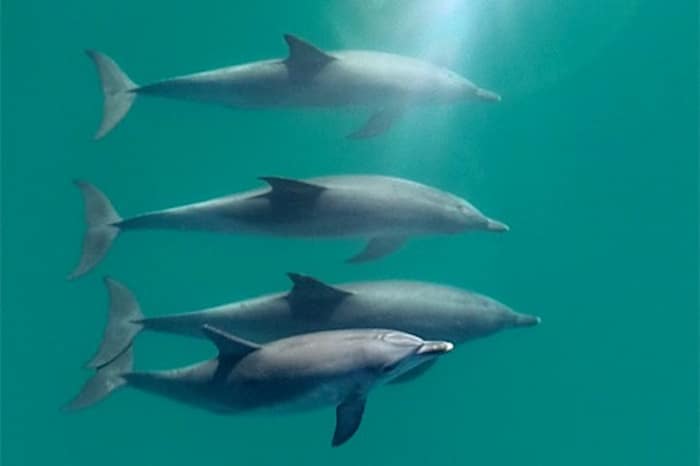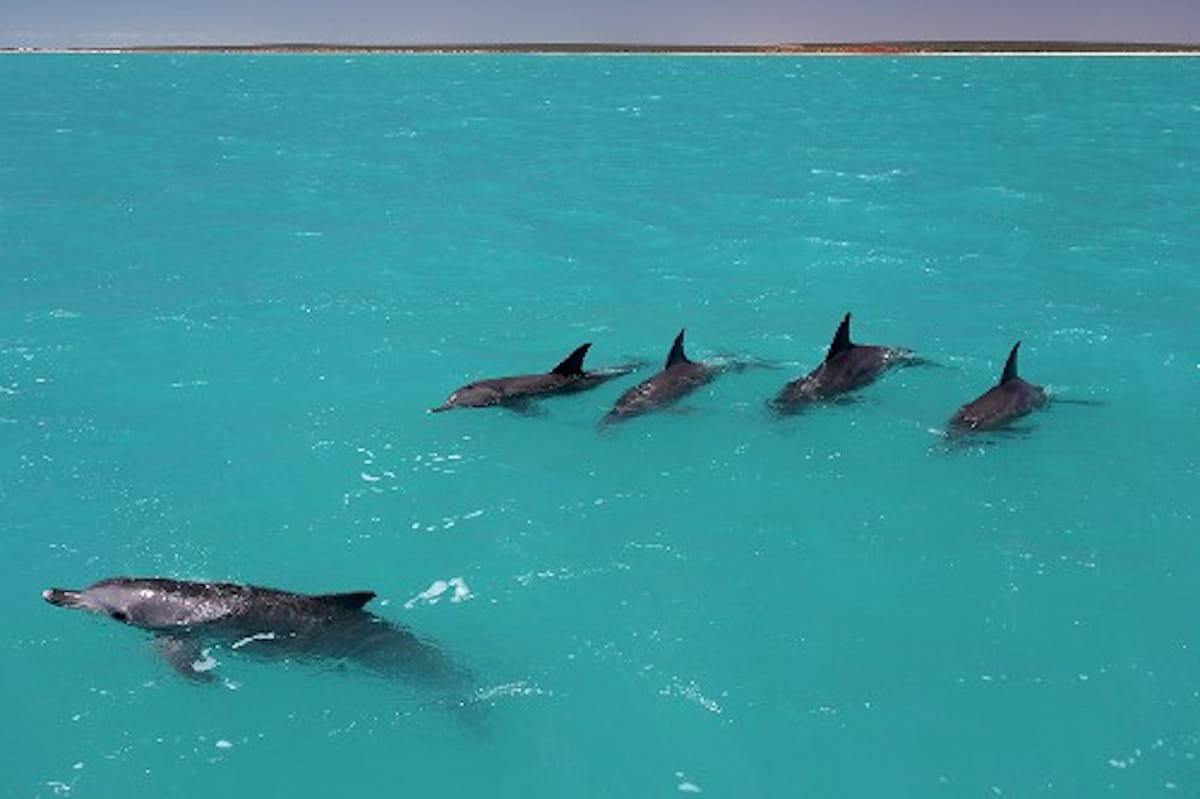Products You May Like
Four male dolphin allies and a female. Dr. Simon Allen
 Why you can trust us
Why you can trust us
Founded in 2005 as an Ohio-based environmental newspaper, EcoWatch is a digital platform dedicated to publishing quality, science-based content on environmental issues, causes, and solutions.
Humans have long been thought to be distinct from other animals in our ability to form complex, multilevel alliances in order to reach shared goals.
However, new research published in the Proceedings of the National Academy of Sciences Monday shows that male bottlenose dolphins do the same thing, and they do it for a very relatable reason — to help each other get laid.
“What happens as a male, you might be in a trio, herding a female. And if someone comes to take that female, the other males in your team and your second-order alliance come in and help you,” study co-author and Bristol University animal behavior professor Dr. Stephanie King told The Guardian. “These males have a very, very clear idea of who is in their team.”
The fact that male dolphins act as “wingmen” to each other has been observed before. A 2019 study looking at male southern bottlenose dolphins in Coffin Bay, Australia, found that they were more likely to find a mate if they had help from their brothers and cousins, as Australia’s ABC News reported at the time.
The new research also focuses on dolphins down under, this time Indo-Pacific bottlenose dolphins (Tursiops aduncus) at Shark Bay in Western Australia, as the University of Bristol reported. But what sets it apart is the strength and size of the male alliances it documented.
‘[W]e show that male bottlenose dolphins form the largest known multilevel alliance network outside humans,” the study authors wrote.
The researchers focused on the social networks of 121 male dolphins that they observed during peak mating season in Shark Bay from 2001 to 2006, The Guardian reported. What they found was that the dolphins would have two or three close bros and then larger friend groups of around 14. These groups would help each other find females, fend off rival males or steal females away from other males. In addition, the groups of 14 would also team up to form “third order” alliances, according to the University of Bristol. Unlike in the 2019 study, the male dolphins in the different alliances were not related to each other. But, as in the earlier study, their ability to cooperate paid off.
“Not only have we shown that male bottlenose dolphins form the largest known multilevel alliance network outside humans, but that cooperative relationships between groups, rather than simply alliance size, allows males to spend more time with females, thereby increasing their reproductive success,” King said in the university press release.
The study challenges some assumptions scientists had made about intergroup cooperation: that it requires pair bonds and a male role in child-rearing. These are characteristics that have evolved in humans but not in chimpanzees, our closest genetic relative.
“However, our results show that intergroup alliances can emerge without these features, from a social and mating system that is more chimpanzee like,” study co-leader and Professor Emeritus at the University of Massachusetts Richard Connor said in the press release.

The study does lend support to another hypothesis, according to The Guardian. This is the “social brain” hypothesis that animals who need to keep track of larger social networks have larger brains. Dolphins and humans are the animals with the largest brains compared to their bodies.
“It’s not a coincidence,” Connor told The Guardian.
Could other large-brained mammals also form similar groups?
“One would not rule out the possibility that other cetaceans could develop similar alliances,” former director of Translational Medicine and Research at the National Marine Mammal Foundation in San Diego, California, Stephanie Venn-Watson, who did not participate in the study, told The Guardian.
For the researchers, the finding opens up avenues for understanding the emergence of intergroup cooperation.
“Our work highlights that dolphin societies, as well as those of nonhuman primates, are valuable model systems for understanding human social and cognitive evolution,” King said in the press release.
Subscribe to get exclusive updates in our daily newsletter!
By signing up, you agree to the Terms of Use and Privacy Policy & to receive electronic communications from EcoWatch Media Group, which may include marketing promotions, advertisements and sponsored content.
